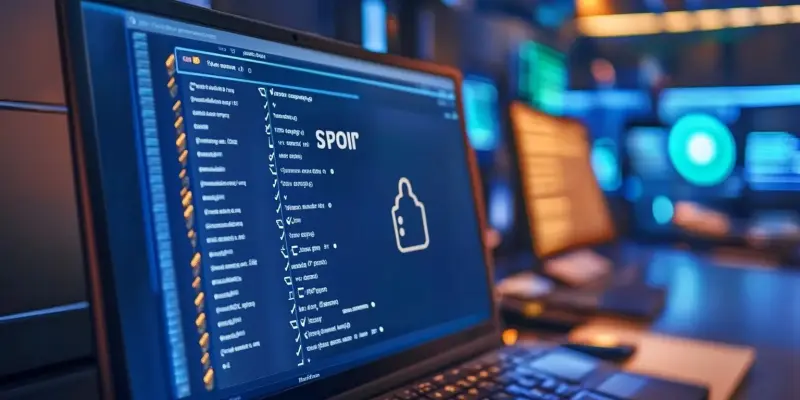Recent advancements and changes in the cybersecurity landscape have brought to light alarming vulnerabilities in Remote Desktop Protocol (RDP) security. A study by the cybersecurity firm Specops, focusing on data from the company’s honeypot system, reveals trends and commonalities in exploited passwords. This analysis sheds light on how simplistic password choices make systems more susceptible to attacks.
The Ten Most Frequently Used Passwords
Unveiling Patterns in Common Passwords
The analysis of NTLMv2 password hashes exposed a striking pattern where predictable passwords were predominantly targeted by attackers. The ten most frequently used passwords included sequences such as “123456,” “1234,” “Password1,” “12345,” “P@ssw0rd,” “password,” “Password123,” “Welcome1,” “12345678,” and “Aa123456.” The simplicity of these choices highlights a prevailing reliance on easily guessable credentials by users, which prompted major concerns among cybersecurity experts.
Specifically, the password “123456” was the most commonly exploited, revealing a significant vulnerability. The fact that these predictable numerical sequences and variations of the word “password” were the primary targets indicates that the attackers capitalize on the widespread use of weak passwords. This trend underscores the critical need for users to adopt more complex and difficult-to-guess credentials.
Moreover, combining personal and work passwords or incorporating easily accessible information further weakens password security, facilitating unauthorized access. Attackers exploit these weaknesses using automated tools that attempt thousands of password combinations per minute, increasing the likelihood of successful intrusions.
Understanding Cybercriminals’ Tactics
The role of RDP in both remote work and IT management makes it a prime target for cybercriminals who often scan for exposed RDP servers and employ brute force attacks. These methods result in considerable failed login attempts, serving as both an indicator of attacks and a potential warning sign for organizations.
Attackers continually evolve their tactics to adapt to the available technologies and defenses, making it essential for organizations to stay ahead of these threats. The repetitive nature of brute force attacks often goes under the radar, effectively concealing the attack until a breach has already occurred. It is crucial to understand and recognize these patterns to effectively mitigate risks and secure networks.
Enhancing RDP Security
Recommendations for Stronger Password Policies
To rectify the glaring weaknesses in RDP password security, Specops recommends several effective measures. Firstly, implementing multi-factor authentication (MFA) significantly fortifies defenses, ensuring that even if a password is compromised, an additional layer of verification is required.
Another essential strategy is to avoid the direct exposure of RDP servers to the internet, reducing the vulnerability window and limiting potential points of entry for cybercriminals. Regular updates and timely application of security patches are fundamental practices in maintaining a well-secured and resilient Windows server environment.
Additionally, restricting RDP access to specific, authorized IP addresses mitigates unauthorized attempts by ensuring only sanctioned users gain access. Establishing robust password policies is paramount. By enforcing complex password requirements, such as a combination of uppercase, lowercase, numbers, and special characters, organizations can significantly reduce the probability of password breaches.
Utilizing Password Auditing and Monitoring Services
Another crucial defensive strategy is deploying auditing software and credential monitoring services to track the security of passwords actively. These tools detect weak or compromised passwords, providing organizations with the necessary data to mandate password changes and strengthen overall security.
Constant vigilance is indispensable given the evolving nature of cyber threats. Employing a proactive approach not only helps in identifying potential vulnerabilities but also ensures timely corrective actions. Regular security audits facilitate a more comprehensive understanding of the security landscape, enabling organizations to adapt and reinforce their defenses effectively.
Safeguarding Against Future Threats
Embracing a Security-First Mindset
Ultimately, securing RDP connections against unauthorized access demands adopting a security-first mindset within organizations. By prioritizing cybersecurity education and training, employees can be made aware of best practices and the importance of robust password hygiene.
Encouraging a culture where security is integrated into daily operations ensures that all personnel remain vigilant against potential threats. This holistic approach, combining advanced technological defenses with informed human intervention, is the most effective way to safeguard against the ever-present risks posed by cyberattacks.
Staying Ahead of the Evolving Cyber Threat Landscape
Recent advancements and changes in the cybersecurity landscape have exposed significant vulnerabilities related to Remote Desktop Protocol (RDP) security. Notably, a study conducted by the cybersecurity firm Specops, which analyzed data from the company’s honeypot system, highlights trends and commonalities in exploited passwords. This research demonstrates that simplistic password choices greatly increase the susceptibility of systems to attacks. According to Specops’ investigation, many users still favor easy-to-guess passwords, like “123456” or “password,” which significantly compromises security. Cybercriminals constantly evolve their methods, and weak passwords offer an effortless entry point. This underscores the necessity for stronger, more complex passwords to safeguard sensitive information and prevent unauthorized access. Implementing multi-factor authentication (MFA) and routine password updates are also recommended to enhance security measures. As the digital threat landscape continues to evolve, staying informed and proactively addressing vulnerabilities is more critical than ever in reducing the risk of security breaches.

